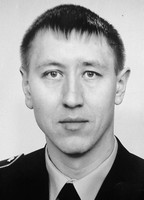System approach to build up movement coordination qualities in skilled female volleyball players
Фотографии:
ˑ:
Teoriya i praktika fizicheskoy kultury №3 2017, pp.36-39
UDC 75.569
Postgraduate A.B. Tinyukov1
Dr.Hab., Professor L.D. Nazarenko1
1Ulyanovsk State Pedagogical University n.a. I.N. Ulyanov, Ulyanovsk
Movement coordination qualities development issues are ranked among the most challenging ones and considered basic for the highly-skilled athletes’ special and technical fitness improvement systems. The available theoretical and practical literature extensively considers the muscular strength, speed-strength, agility, jumping ability and many other critical physical qualities of athletes. The practical studies are often focused on sets of special physical practices geared to improve some aspects of the athletic performance. The present study offers the relevant issues being addressed via a systemic approach to the athletic motor qualities and skills development process, with a special emphasis on special exercises to simultaneously excel a number of athletic movement coordination abilities required for complicated techniques being mastered and excelled. An educational experiment confirmed practical benefits of the athletic training system improvement approach tested as efficient and promising.
Keywords: sport mastery, system approach, movement coordination quality development, volleyball.
References
- Bal'sevich V.K. Ontokineziologiya cheloveka [Human ontokineziology]. Moscow: Teoriya i praktika fiz. kultury i sporta publ., 2000, 275 p.
- Bernstein N.A. Ocherki po fiziologii dvizheniy i fiziologii aktivnosti [Essays on movements physiology and activity physiology]. Moscow: Meditsina publ., 1996, 166 p.
- Gordon S.M. Sportivnaya trenirovka. Nauchno-metod. posobie [Athletic training. Teaching aid]. Moscow: Fizicheskaya kultura publ., 2008, 250 p.
- Donskoy D.D. Biomekhanika s osnovami sportivnoy tekhniki [Biomechanics and basics of sports technique]. Moscow: Fizicheskaya kultura i sport publ., 1971, 287 p.
- Zheleznyak Y.D., Portnov Y.M., Savin V.P. et al. Sportivnye igry: Sovershenstvovanie sportivnogo masterstva. Uchebnik [Sports Games: athletic skills building. Textbook]. Moscow: Akademiya publ., 2012, 400 p.
- Kleshchev Y.N. Voleybol. Podgotovka komandyi k sorevnovaniyam. Ucheb. posobie [Volleyball. Pre-season team training]. Moscow: SportAkademPress publ., 2008,192 p.
- Konarzhevskiy Y.A. Chto nado znat rukovoditelyu shkolyi o sistemah, sistemnom podhode i sistemnom analize [School director's essentials on systems, system approach and system analysis]. Chelyabinsk: CSPI publ., 1991, 174 p.
- Korenberg V.B. K teorii sportivnoy dvigatelnoy aktivnosti [Theory of athletic motor activity]. Teoriya i praktika fiz. kultury, 2007, no. 2, pp. 7-11.
- Nazarenko L.D. Kontseptsiya klassifikatsii dvigatelnykh koordinatsiy [The concept of classification of motor coordinations]. Teoriya i praktika fiz. kultury, 2015, no. 3, pp. 99-101.
- Nazarenko L.D. Sredstva i metody razvitiya dvigatelnykh koordinatsiy [Means and methods of motor coordination development]. Moscow: Teoriya i praktika fiz. kultury, 2003, 258 p., il.
- Ratov I.P., Popov G.I., Loginov A.A., Shmonin B.V. Biomekhanicheskie tekhnologii podgotovki sportsmenov [Biomechanical technologies of athletic training]. Moscow: Fizkultura i sport publ., 2007, 120 p.
- Sidash A.L. Ispolzovanie lokalnykh otyagoshcheniy dlya povysheniya tochnosti verhney peredachi voleybolistami [The use of local weights to increase accuracy of overarm pitch by volleyballers beginners]. Teoriya i praktika fiz. kultury, 2012, no.1, pp. 79-80.
- Farfel V.S. Upravlenie dvizheniyami v sporte [Movement management in sport]. Moscow: Fizkultura i sport publ., 1975, 208 p.



 Журнал "THEORY AND PRACTICE
Журнал "THEORY AND PRACTICE